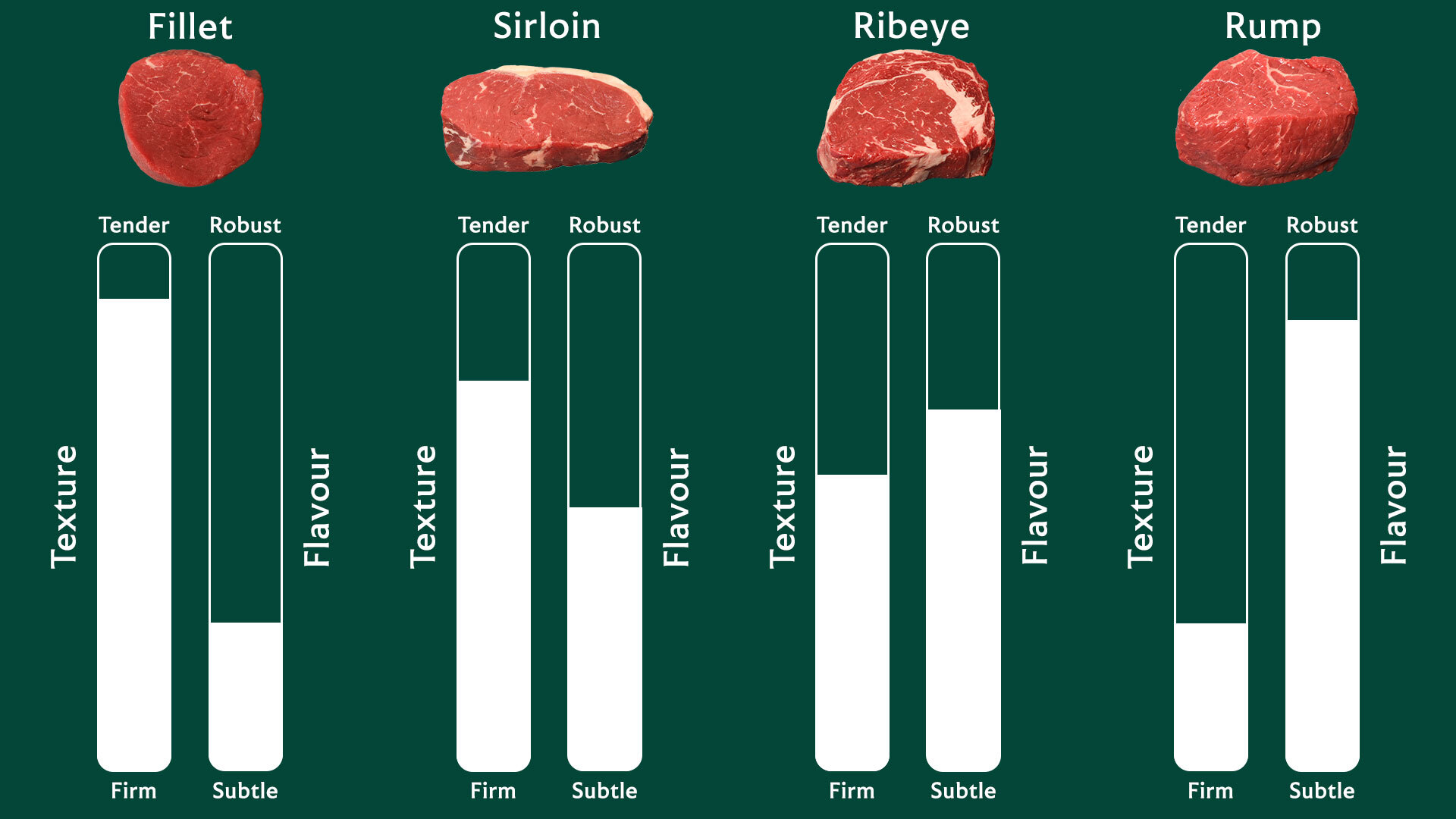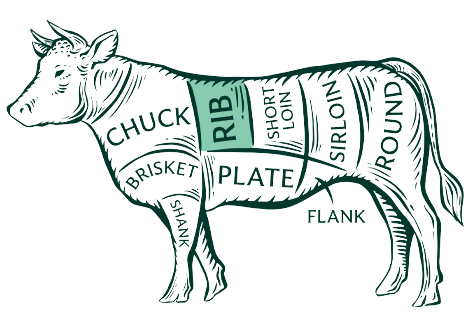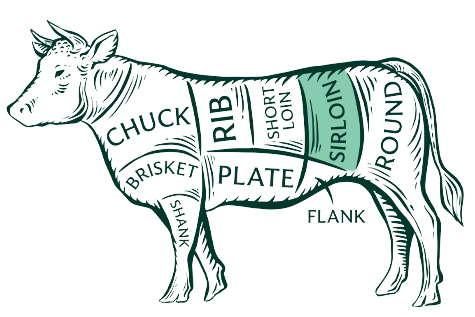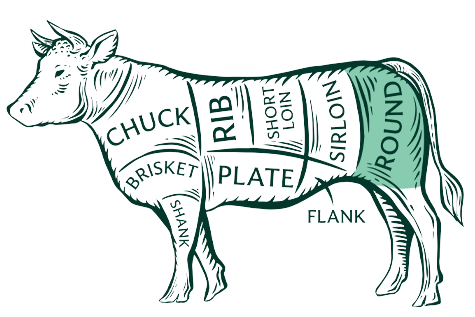
Big Four Steak Breakdown
3rd Mar 2025
Our Big Four Steaks, Ribeye, Fillet, Sirloin and Rump, are a true Donald Russell staple, and there is no better time to showcase them than National Butchers' Week. We've broken down each cut to guide you through which steaks are best for you and how to get the most from them.
Two key attributes of any cut of beef are the marbling and tenderness, but it is not always explained what the significance of these attributes are:
Marbling -
Marbling are the fine flecks of fat running through a cut that break down during cooking, named so for resembling a slab of marble. Marbling creates a richer flavour and texture combination in the finished cooked cut.
Tenderness -
Tenderness is not all down to cooking, the choice of cut can play a large part in this. The harder working the muscle is, the less tender the cut will be. This typically means any cuts from the rib or loin area will be on the tender side, whereas cuts from the round will be less tender.
Primal:
| The Rib Primal -
The rib primal has generous marbling throughout that creates a tender finish with deep beef flavours when cooked. Due to the depth of their natural flavour, cuts from this area are usually cooked with light seasoning to enhance the meaty flavour are best suited for grilling or roasting. |
|
| The Sirloin Primal -
The Sirloin primal has a natural, buttery tenderness which lends itself to high-heat cooking methods which sear the outside of the cut and in turn lock in the natural flavour and juiciness. |
|
| The Round -
The round contains less marbling which can have drier results if not cooked correctly. This area yields popular roasts and the most effective way to cook cuts from this area are slow-cooking methods that break down the tissue of the exercised muscle and enhances the depth of flavour. |
Understanding the characteristics of a cut is a key step in enjoying mouth-watering steaks at home. Some things to consider are:
How you plan to cook the steak -
Certain cuts are best suited to specific cooking methods, so it is important to consider which cut will work best with your appliances, recipe and desired results.
Finish -
It is important to consider the flavour and texture combination you would prefer. Are you seeking melt-in-the-mouth texture, are you after the meatiest flavour or would you like the perfect balance of both?

Steaks:
Due to the generous marbling of the rib primal, Ribeye Steaks naturally have more fat than leaner cuts such as fillet. Although the ‘eye’ of fat can make these steaks look less appealing to some people, the fat content of this cut is key to the rich beefy flavour of these steaks.
When cooking these steaks, the first step is to simply season with salt and pepper to your liking. Secondly, make sure your pan is smoking hot with a splash of oil before placing your steak in to cook. The cooking time is dependent on how you like your steak, and the below recommended times can be used as a guide:
When the recommended time has been reached remove the steak from the pan and allow to rest before slicing across the grain and serving with your choice of sides and sauces.
As the muscles in this area is quite active, Sirloin Steaks are typically quite lean with subtle marbling. These steaks are not only tender but have a notably meaty flavour, opening them up to accompaniments with a stronger flavour.
Sirloin Steaks can be cooked in a variety of ways, however pan-frying or grilling will produce mouth-watering results. The below recommended times can be used as a guide:
Fillet Steaks are cut from the Sirloin primal and are regarded as one of the most tender steaks available, as the muscle does the least work. Fillet Steaks have subtle marbling and a lower fat content, making them a leaner steak but also less flavourful than some others.
These steaks are best cooked pan-fried or grilled due to their tenderness, however cooking these steaks to well done does run the risk of drying the cut out. The below recommended times can be used as a guide:
As Fillet Steaks have a more subtle flavour, they lend themselves well to herbs and flavoured butters, to enhance their overall taste.
As Rump Steaks are cut from the round area, the hardest working muscle, they are less tender on average than steaks like Ribeye or Sirloin. However, due to the area they are cut from, Rump Steaks are widely regarded as one of the most flavourful steaks, which balances well with accompaniments that are mild in flavour.
Due to the texture of these steaks, a number of cooking methods can be suitable, however over-cooking these steaks can make the eating experience much less pleasant. For pan-frying, the recommended times below can be used as a guide:
Resting:
Allowing your steaks to rest is important as the juices redistribute evenly throughout the cut, leaving it tender and succulent. If you cut into your steak straight from cooking the juices will run out, leaving you with a drier and less pleasant finish.
Lovingly hand-prepared and combined with our range of sides and sauces, along with speedy online delivery, steak night at home is simple with Donald Russell.








